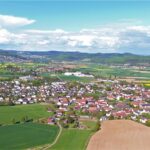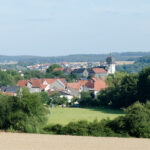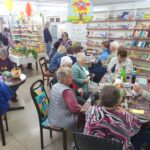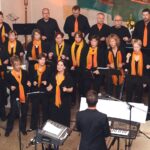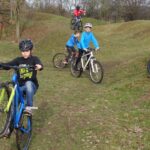Niederwalgern, Hesse, Germany
The village Niederwalgern near Marburg with its 1500 inhabitants has been a part of the municipality Weimar/Lahn with a total population of around 7000, since 1974. The formerly rurally characterized village is located on the Western hillside of the Lahn valley and has good transport connections. The historic half-timbered buildings in the old village center as well as the mighty fortress church from the 13th century are reflective of the village’s long history. Today, Niederwalgern is a settlement hotspot for the municipality.
The village renewal process, started in the 1990ies, led to continuous advancement for Niederwalgern. It is especially important to the population to maintain and improve the high quality of life and excellent rural infrastructure through active involvement and a diverse variety of associations, initiatives and institutions. Some examples include the initiative “Bürger helfen Bürgern” (citizens helping citizens”, the booster club Niederwalgern, and the Dorftreff e.V.
Including the village administration in the political process of the municipality proved vital, as several renovation projects in Niederwalgern were successfully implemented and positively impacted the development of the village. For example, the school building, a regionally typical half-timbered building from the late 19th century, was completely renovated and expanded to include a small apartment and a venue hall for small cultural events. In collaboration with the local comprehensive school, a learning and experimenting field was constructed and is now used transregionally. By renovating and repurposing the community center, an important social and cultural hotspot was created. Musical and cultural clubs collaborated with the comprehensive school to transform an old gymnasium into one of the most important music and cultural venues of the region. The village center was also redesigned and adapted to accommodate modern needs. All of these renovation projects resulted in the usage of almost one hundred percent of existing buildings and basically eradicated vacancies.
These structural processes had a lasting positive effect on the resulting volunteer activity, which subsequently expanded its work to projects in other fields of village development. Especially noteworthy are the efforts in social initiatives and natural, environmental and climate protection, which manifested in copious projects. An adventure trail was constructed and run exclusively by volunteers and sheds light on unique aspects of the landscape, such as the Martinsweiher, a pond that belongs to the European reservation network “Natura 2000” and is home to water buffalos and a vast variety of birds. It also features a bird watching location. Other noteworthy projects include the installation of 80 photovoltaic plants on rooftops, the construction of the largest pellets heating plant of the county which supplies heat to the comprehensive school. The continuous efforts made by the AG Biodiversität (task force for biodiversity), such as wild flower meadows and orchards, nest boxes and insect hotels and numerous educational initiatives, partially organized in collaboration with various educational institutes, should also be mentioned here.
As the number of agricultural enterprises has rapidly declined due to structural changes, a communal location was created to communally house machinery, which is also used for larger events such as the Harvest festival.
Regular exchange with neighboring communities and their administrations is fostered in order to ensure good coordination in regards to transregional matters. For example, a communal bus was acquired to improve mobility. It is operated by volunteers and connects 12 separate villages. The daily operations of the village center and the adjacent store with essential goods also fall to volunteers.
The relatively small village Niederwalgern successfully implemented a number of projects and measures over the years through the excellent collaboration of all inhabitants and the municipality, massive personal contributions and continuous engagement. Ongoing efforts to involve children and teenagers in the development and planning process can be considered a hopeful option for the future.
Evaluated: 2020

